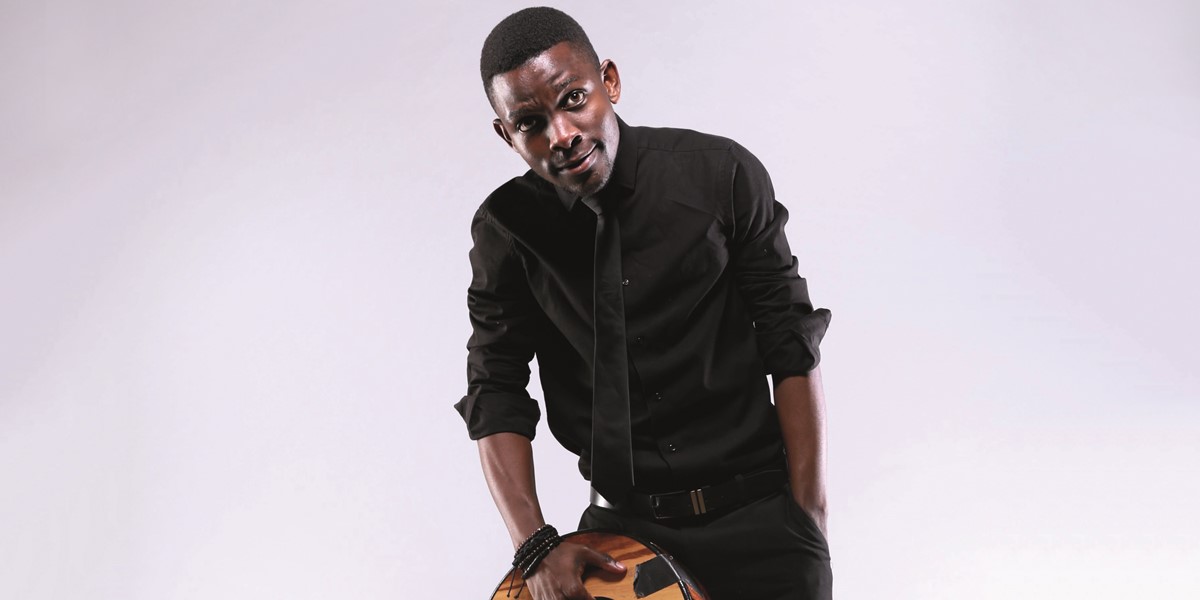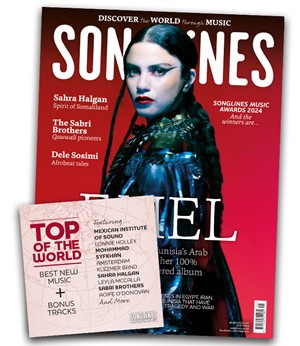Sunday, March 21, 2021
Mbira | Musical Instrument Guide (with John Falsetto)
Zimbabwean musician and actor John Falsetto takes his own customised thumb piano everywhere with him, as he tells Charlotte Algar

John Falsetto and I meet at the Playhouse Theatre in London’s West End, where he’s acting in The Jungle, set to travel to Broadway in the new year. He pops his head out of the stage door and I am led through narrow corridors lined with costumes and haphazardly stacked props to a dressing room. Having sparked the idea for his new album Sounds of Refuge with fellow cast member Mohamed Sarrar in this setting, it is clear that Falsetto always finds a place in his creative exploits for his traditional Zimbabwean lamellophone, the mbira. “I take my mbira to every acting audition... I got my mbira into Twelfth Night at Shakespeare’s Globe last summer!”
Having begun learning mbira at just 13 years old, starting on a nhare mbira (25-28 keys) and moving later to a nyunga nyunga (15-18 keys with a different tuning, pictured above) and marimba, Falsetto followed a pedagogy of listening and observing, gradually absorbing techniques from older musicians. “We all [Zimbabweans] know our music anyway. You know the rhythms – you just get your hands on it... My main inspiration was Chiwoniso Maraire [1976-2013] until she passed.” Like Maraire, Falsetto has always sung and played simultaneously. “It may sound weird, but when I’m improvising I always have to find something to sing. We have vocables [Falsetto unexpectedly bursts into song, filling an otherwise silent room with impressive, off-the-cuff melodies, then stops abruptly], these are supposed to be an extension of the mbira.”
The mbira, one of just a few lamellophones (instruments comprised of keys or tongues, often metal or bamboo, fixed at one end and free at the other), has a unique and fascinating set-up, encased in a wooden resonator or a hollowed calabash. Falsetto explains: “It’s not chromatic like a piano. My nyunga nyunga has 15 keys. On the top layer on the right, there’s the same three notes as the top left. Then the keys on the bottom right, those are the same three notes an octave lower, then you have other notes on the bottom left... That’s what creates the opportunity for polyrhythms, notes are repeated.” I enquire, with the typical naivety of a Western musician: ‘can you play a whole major scale?’. It seems that my automatic reversion to Western tonality is shared by Falsetto’s collaborators. “I worked with an mbira-maker in Zimbabwe to create an instrument that I can use to collaborate... I have a 24-key nyunga nyunga now. It creates melodies that you can’t get from the smaller nyunga nyunga, allowing me to play fuller collaborations.”
The fascinating construction of the mbira and how he has incorporated it into his West End and soon-to-be Broadway career all seems by the by to Falsetto. However, when I ask about the mbira’s place in Zimbabwean culture, he launches into an impassioned speech: “It’s a very spiritual instrument. I’ve played for people who aren’t Zimbabwean, and they say: ‘That’s so soothing, so calming,’.’’ It’s this connection with people and culture that seems to be at the crux of Falsetto’s affinity with his instrument of choice.
“The mbira is Zimbabwean music, the mbira is the spirit of Zimbabwe, if anywhere in the world you want a sound of being Zimbabwean – it’s mbira. It’s because of our ancestral connection to what the mbira always did for us.”
➤ This article originally appeared in Songlines #144. Find out more about subscribing to Songlines

